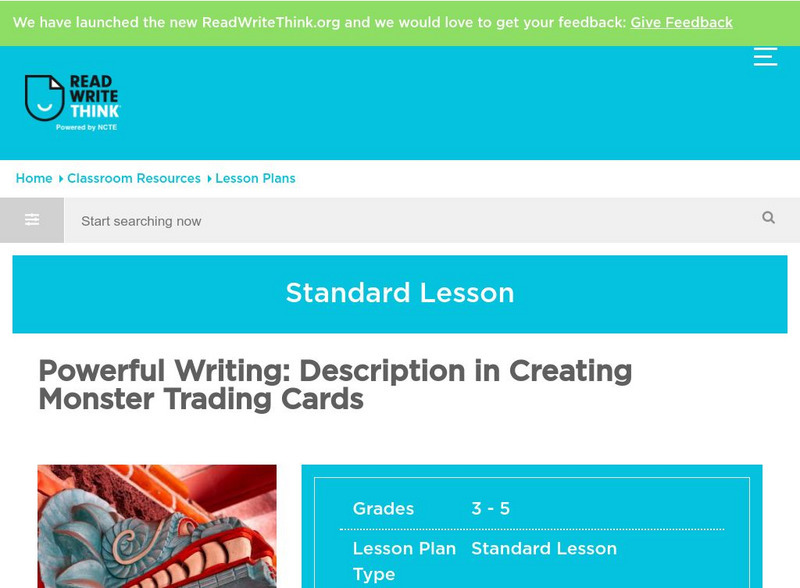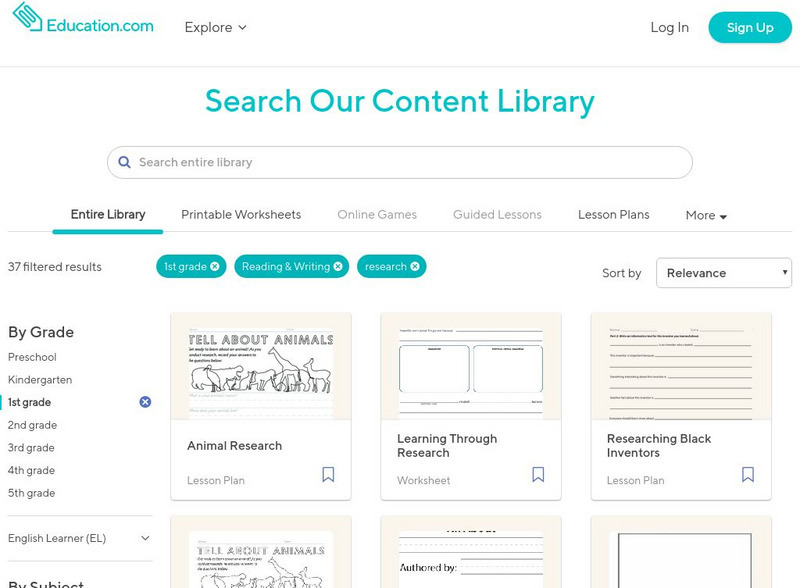ReadWriteThink
Read Write Think: Research Building Blocks: Skim, Scan, and Scroll
Contains plans for two lessons on locating supporting details that are part of a larger unit on researching a state symbol. It works on skills like determining the most important information, using key words to identify relevant...
ReadWriteThink
Read Write Think: Exploring Art Through Descriptive Writing
Contains plans for two lessons that use the book "Anna's Art Adventure" by Bjorn Sortland to teach students to write about art descriptively. In addition to objectives and standards, this instructional plan contains links to sites used...
ReadWriteThink
Read Write Think: Powerful Writing Description in Creating Monster Trading Cards
Contains plans for two lessons that teach about descriptive writing by asking young scholars to create their own monster trading cards with vivid descriptions. In addition to objectives and standards, this instructional plan contains...
ReadWriteThink
Read Write Think: Cooking Up Descriptive Language Designing Restaurant Menus
Contains plans for four lessons that ask students to develop their descriptive writing skills by creating their own restaurant menus. In addition to objectives and standards, this instructional plan contains links to sites used in the...
Education.com
Education.com: 1st Grade Reading & Writing Resources
[Free Registration/Login Required] This collection of first grade reading and writing resources contains lesson plans and worksheets that can be used during the research process.
ReadWriteThink
Read Write Think: Scaffolding Comprehension Strategies Using Graphic Organizers
A three-part standards-based lesson in which students will use collaborative strategic reading to apply four reading strategies: preview, click and clunk, get the gist, and wrap-up. They will work in cooperative groups while scaffolding...
Texas Instruments
Texas Instruments: Simple Programs to Apply Formulas
Students learn how to write simple programs to evaluate formulas in several variables for lists of data. They apply these skills to the computation of areas, volumes and surface areas of familiar geometric solids.






